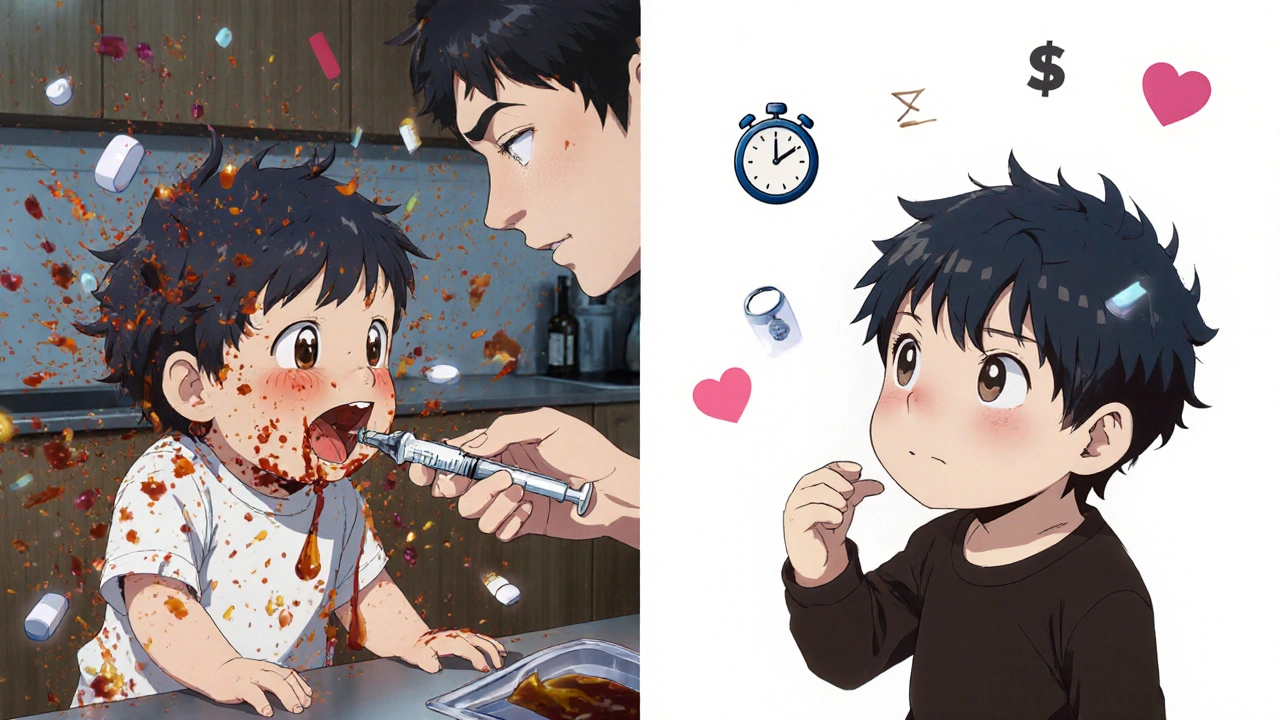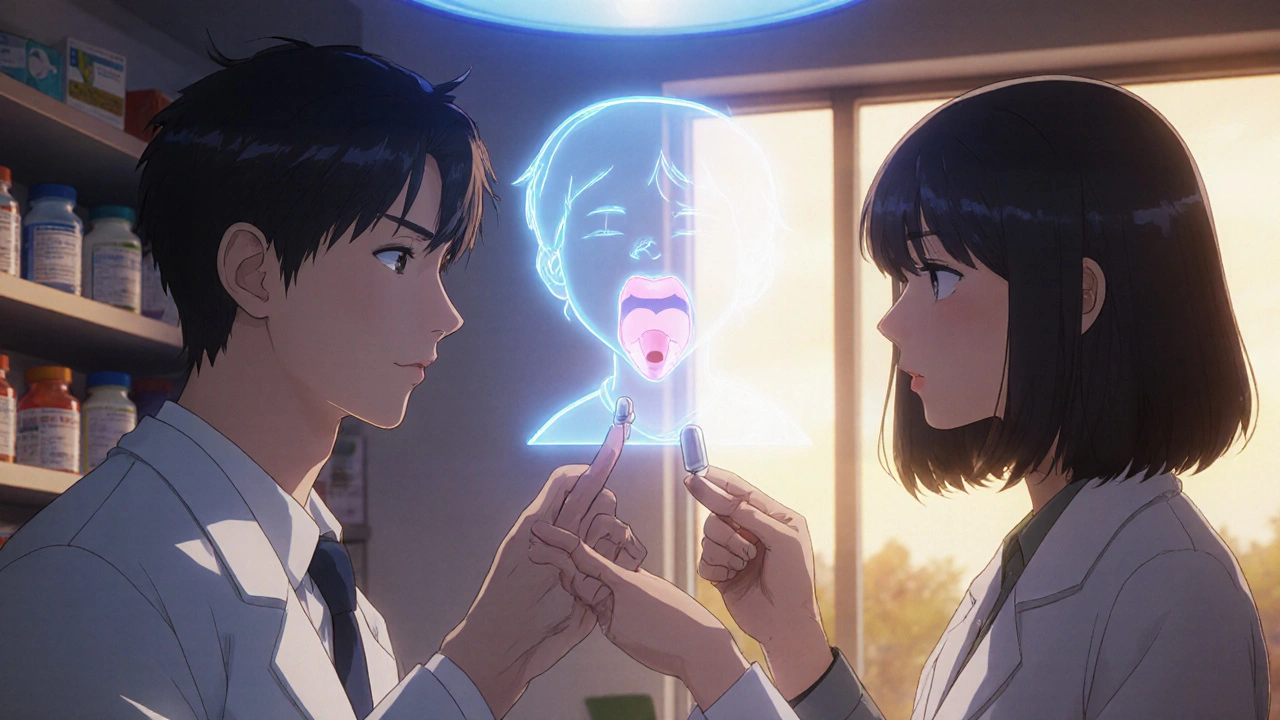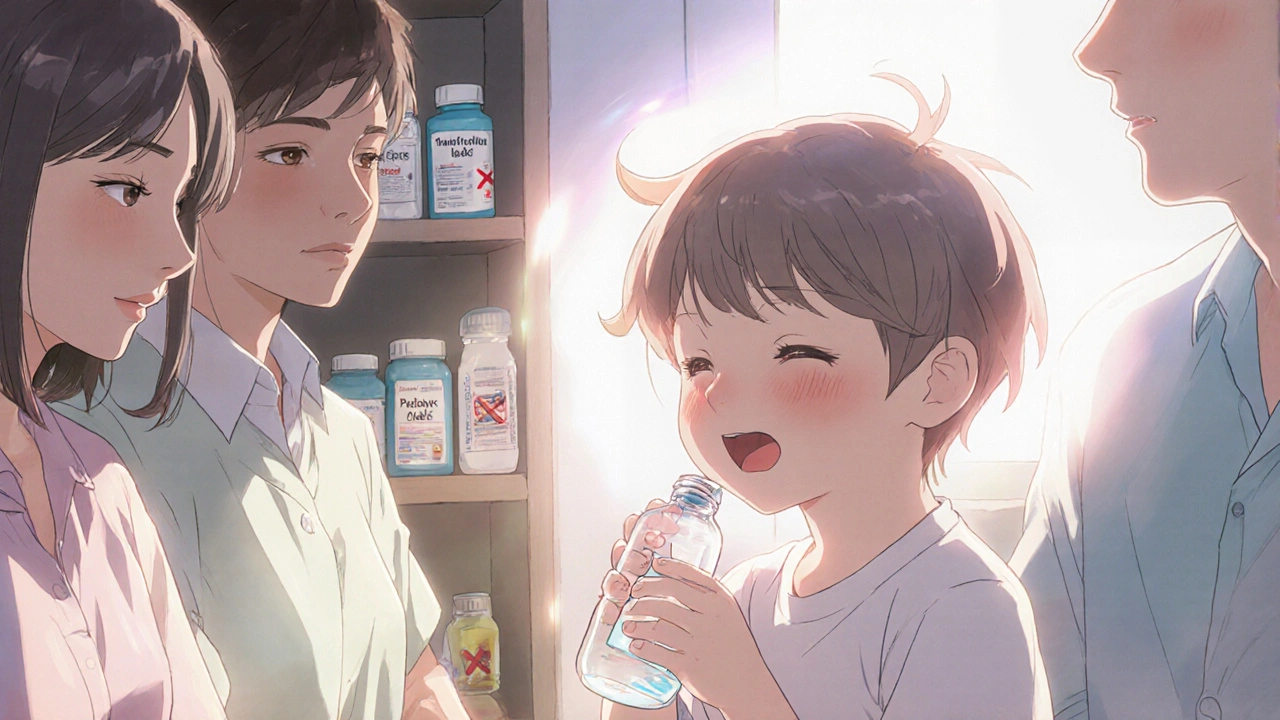When your child is sick, the last thing you want is a battle over medicine. You’ve got the prescription in hand, but now you’re staring at two options: a sweet-tasting liquid or a tiny pill. Which one really works better? The old rule was simple - liquids for kids, pills for adults. But that’s not true anymore. In 2025, the choice isn’t just about what’s easier - it’s about safety, cost, and even how well the medicine actually works.
Why the Old Assumption Is Wrong
For decades, doctors and parents assumed kids couldn’t swallow pills. So, liquid became the default. But research from the European Medicines Agency and the World Health Organization shows this isn’t based on science - it’s just habit. Children as young as 3 years old can learn to swallow tablets safely. In fact, a 2012 study found that mini-tablets (as small as 2mm) were just as acceptable - if not more so - than liquids for babies as young as 6 months. Parents thought their toddlers would choke. But actual choking incidents with properly sized pediatric tablets are extremely rare: less than 0.002% over a decade of FDA data.When Liquid Still Makes Sense
That doesn’t mean liquids are obsolete. For babies under 6 months, they’re still the safest and most practical option. Their swallowing reflex isn’t fully developed, and precise dosing by weight is critical. Liquid allows you to give exactly 1.7mL or 3.2mL - something you can’t do with a whole tablet unless you crush it. And crushing? That’s risky. It can ruin time-release coatings, change how the drug is absorbed, or even make it less effective. For medications like levothyroxine or warfarin, where tiny dose changes matter, liquids are still the gold standard.The Hidden Problems with Liquid Medications
Most parents don’t realize how messy and unreliable liquid meds can be. A 2021 study from the American Academy of Pediatrics found that 15-20% of parents mismeasure doses - using kitchen spoons, eyeballing it, or misreading the syringe. That’s not just inconvenient. It’s dangerous. Too little? The infection doesn’t clear. Too much? You risk side effects. Then there’s taste. A 2007 study found 68% of kids refuse liquid meds because they taste like chemicals, not fruit. That “strawberry” flavor? If it doesn’t actually taste like real strawberries, your child will spit it out - every time. And refrigeration? Many liquids need to be kept cold after opening. If you forget, the medicine can spoil in just 14-30 days. That’s waste. That’s money down the drain.
Why Tablets Are Better Than You Think
Modern pediatric tablets aren’t the same as adult pills. Today’s options include:- Mini-tablets - as small as 2mm, easy to swallow, no crushing needed
- Orodispersible tablets - dissolve on the tongue in 30 seconds, no water required
- Film-coated tablets - hide bitter tastes, come in kid-friendly shapes
Cost and Waste Matter More Than You Realize
Let’s talk numbers. A 2021 NHS analysis found that switching just 10,000 pediatric prescriptions from liquid to tablet form saved £7,842. For a medium-sized hospital, that’s over £50,000 a year. Why? Liquids cost more to produce, require special packaging, and expire faster. You buy a 100mL bottle, use 40mL, and toss the rest. Tablets? You give exactly what’s needed. No leftovers. No waste. And the global market is shifting. Between 2015 and 2022, the number of approved pediatric tablet formulations jumped 220%. The European Union’s 2007 Pediatric Regulation pushed manufacturers to develop solid forms. Now, 47 new pediatric tablets have been approved in Europe since 2008 - compared to just 12 new liquid-only options.How to Teach Your Child to Swallow a Tablet
The biggest fear? Choking. The reality? With the right technique, even a 3-year-old can do it. Here’s how:- Start with practice. Use mini-marshmallows or tiny bread balls - the same size as the tablet.
- Use the “pop-bottle method”: Place the tablet on the tongue, take a sip from a plastic water bottle, and swallow with a sucking motion. It creates a natural swallowing reflex.
- Go slow. Don’t rush. Try once a day for a week. Celebrate small wins.
- Start with the smallest size available. A 2-4mm tablet is easier than a 6mm one.

What to Ask Your Doctor
Don’t assume your child’s medicine has to be liquid. Ask:- “Is there a tablet version of this medicine?”
- “What size is the tablet? Can I see it?”
- “Does it need refrigeration?”
- “Can you show me how to teach my child to swallow it?”
When to Stick With Liquid
There are still times when liquid is the better choice:- Your child is under 6 months old
- The medicine requires very precise, changing doses (like some heart or seizure meds)
- There’s no tablet version available - and crushing isn’t safe
- Your child has a swallowing disorder or developmental delay
The Bottom Line
For most children over 3, tablets are safer, cheaper, and more effective than liquids. They’re easier to store, less likely to be mismeasured, and often better tolerated. The idea that kids can’t swallow pills is outdated. What’s holding us back isn’t ability - it’s habit. Start small. Talk to your doctor. Try a mini-tablet with a practice ball. You might be surprised how easy it becomes. And your child? They’ll probably thank you - no more bitter tastes, no more spilled medicine, no more bedtime battles.Can a 2-year-old swallow a tablet?
Yes - but only with proper training and the right size. Mini-tablets as small as 2mm are now available and have been tested in children as young as 2. However, most experts recommend waiting until age 3-4 to start training. Use practice techniques like mini-marshmallows and the pop-bottle method. Never force a tablet. If your child resists, stick with liquid for now.
Are liquid medicines less accurate than tablets?
Yes, in practice. While liquids allow precise dosing on paper, real-world use is messy. A 2019 FDA study found that 12-18% of parents make dosing errors with liquids - using spoons, guessing, or misreading syringes. Tablets eliminate this. You give one pill, you know exactly what dose they got. No guesswork.
Is it safe to crush a tablet for my child?
Never crush a tablet unless your doctor or pharmacist says it’s safe. Many tablets are designed to release medicine slowly. Crushing them can cause too much medicine to be absorbed at once - which can be dangerous. Even if the tablet looks easy to crush, it might have a special coating or be time-released. Always ask before crushing.
Why do some liquid medicines taste so bad?
Because many manufacturers use artificial flavors that don’t match real fruit tastes. A 2023 study found that kids reject “strawberry-flavored” medicine if it doesn’t actually taste like strawberries - not just any sweet flavor. Some pharmacies can compound medicines with better-tasting bases. Ask if they can make a version with real fruit extracts or a different flavor profile.
Do tablets cost more than liquids?
No - they usually cost less. Tablets have lower production and storage costs. They don’t need refrigeration, special packaging, or preservatives. A 2021 NHS analysis showed that switching to tablets saved £7,842 per 10,000 pediatric prescriptions. Even if the per-tablet price is slightly higher, the lack of waste and longer shelf life makes tablets cheaper overall.
What if my child refuses to swallow a tablet?
Don’t panic. Try again later. Use practice techniques with food. Offer rewards. Make it a game. If refusal continues after a week of gentle practice, ask your pharmacist if a different formulation exists - like an orodispersible tablet that dissolves on the tongue. Or stick with liquid for now. The goal is adherence, not forcing a method that causes stress.
